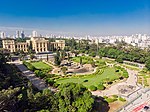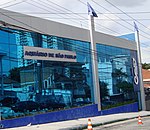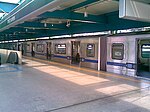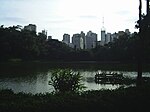Monument to the Independence of Brazil

The Monument to the Independence of Brazil (Portuguese: Monumento à Independência do Brasil) is granite and bronze sculpture in São Paulo, Brazil. It is also known as the Ipiranga Monument (Portuguese: Monumento do Ipiranga) or the Altar of the Fatherland (Portuguese: Altar da Pátria). The monument is located on the banks of the Ipiranga Brook in São Paulo, on the historic site where the later Emperor Pedro I of Brazil proclaimed the independence of the country on September 7, 1822.The monument was designed and built by Italian sculptor Ettore Ximenes (1855–1926) and Italian architect Manfredo Manfredi (1859–1927) to celebrate the first centenary of the Brazilian Independence.
Excerpt from the Wikipedia article Monument to the Independence of Brazil (License: CC BY-SA 3.0, Authors, Images).Monument to the Independence of Brazil
Eixo Monumental, São Paulo Ipiranga (Ipiranga)
Geographical coordinates (GPS) Address Phone number Website External links Nearby Places Show on map
Geographical coordinates (GPS)
| Latitude | Longitude |
|---|---|
| N -23.580277777778 ° | E -46.61 ° |
Address
Monumento à Independência
Eixo Monumental
04261-050 São Paulo, Ipiranga (Ipiranga)
São Paulo, Brazil
Open on Google Maps









